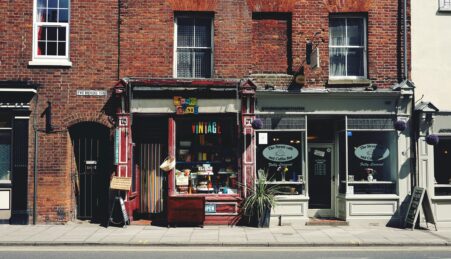By Grace Atkinson
New North and South is a collective programme which marks the 70th anniversary of the Partition of India and Pakistan. This is a network based around connectivity, borders, and perspective, made up of music, film and performance exhibits. In Manchester, three venues make up the story: The Whitworth, Manchester Art Gallery and Manchester Museum.
The Whitworth holds an impressive collection, from South Asian Modernists, to traditional textiles in Beyond Borders. The first UK exhibit by Raqs Media Collective called Twilight Language, epitomises the programmes’ ethic of collaboration. Founded in 1992 by Jeebesh Bagchi, Monica Narula and Shuddhabrata Sengupta, this collective is made up of multiple artists, curators, researchers and editors, and has been exhibited across the world. In just three rooms, sculptures, videos and installations play off each other to create a disjointed and epic narrative. The plastic shapes of ‘Things that Happen When Falling in Love’, that dangle on wires, seem to dance above ‘The Necessity of Everything’, a rug embroidered with gold and silver. Meanwhile, the light from a lighthouse (‘Unusually Adrift From the Shoreline’) slowly moves across them. This installation was first opened in a cinema near Stavanger, the oil capital of the world.
In ‘Alive, with Cerussite and Peppered Moth’, a beamed structure made from wood and resin is canvas to the projection of skeletal, frantic wings. The peppered moth, which evolved from white to soot-black to adapt to the environment of the industrial revolution, is a symbol of resilience and change. On the walls, clocks labeled with different locations, from New York to Babel, all bare identical faces. Their numbers are replaced with words like ‘epiphany’, ‘anxiety’, and ‘guilt’. These are emotions experienced universally, a human connection tied with the notion of time.
In Raqib Shaw’s solo exhibition, historic furniture, clothing and artwork sit beside his paintings of mysticism and opulence. In these enamel and rhinestone-encrusted creations, animals, gods and creatures depict ancient myths and legends while aspects of the artists modern and personal life are intertwined. The walls of the exhibit are covered in a print designed by Shaw, which transforms the room into a space between spaces, between the real and myth, between then and now, and between Kashmir, where Shaw spent most of his youth, and his studio in Peckham, London.
At the Manchester Art Gallery, Neha Choksi’s seven-film installation Faith in Fiction explores solidarity and collaboration. Seven projected films circle the walls, displaying collaged shots of crowds manoeuvring around a raw, urban landscape. Created by seven different editors, Choksi’s piece foregrounds the notion of perspective front-of-stage, and though each film stands on its own, together they create a beautifully overwhelmingly, layered dialogue.
Across the stairway, Waqas Khan’s intricate ink-work can be found, some spread huge across the room. The detail in these drawings is astounding, and the thousands of loops, dots and lines build to make meditative, organic structures. What’s beautiful about Khan’s work is the power it displays in collaboration, the miniscule marks combined to make a huge and moving piece. In the basement, there is a film documenting the making of Hetain Patel’s Don’t Look at the Finger, which explores kung fu and sign language, framed by a West-African arranged marriage. In this trailer, Patel explains his attempts to expand kung fu into a form of emotional communication. Victoria Shulungu, the leading female, describes Patel’s film as ‘physical theatre’ with the aim of ‘having expectations turned upside down’.
At Manchester Museum, Reena Saini Kallat blends the animals of hostile, neighbouring countries to make a vulnerable, imaginary artefact. In this, the Irish deer and English lion combine to make a ‘De-on’, its skeleton bared. A fused swallow and saker, holds thick barbed wire in its beak, as if making a home from the barriers opposed on it. In another room, electronic cables and barbed wires are made into amazing sculptures of lungs, trees and landscapes. In ‘Anatomy of Distance’ an alarm goes of as you walk close to it, a physical embodiment of the hostile borders Kallat conveys.
New North and South is a triumph of collaboration, a display of the power that comes with connectivity, and a moving narrative of disparity, tension and mobility.
Download the New North and South programme.





Leave a reply